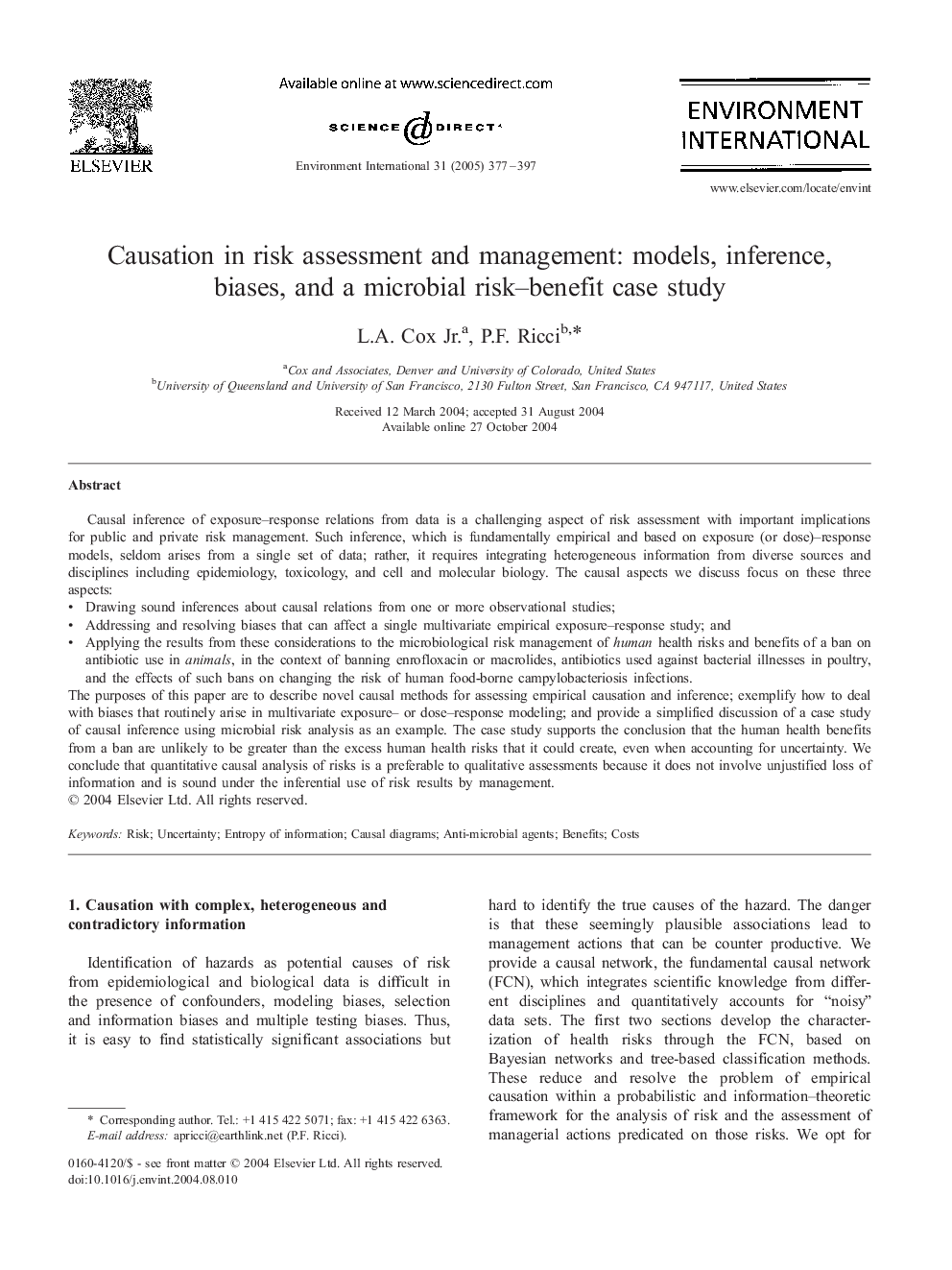| Article ID | Journal | Published Year | Pages | File Type |
|---|---|---|---|---|
| 9455814 | Environment International | 2005 | 21 Pages |
Abstract
The purposes of this paper are to describe novel causal methods for assessing empirical causation and inference; exemplify how to deal with biases that routinely arise in multivariate exposure- or dose-response modeling; and provide a simplified discussion of a case study of causal inference using microbial risk analysis as an example. The case study supports the conclusion that the human health benefits from a ban are unlikely to be greater than the excess human health risks that it could create, even when accounting for uncertainty. We conclude that quantitative causal analysis of risks is a preferable to qualitative assessments because it does not involve unjustified loss of information and is sound under the inferential use of risk results by management.
Related Topics
Life Sciences
Environmental Science
Environmental Chemistry
Authors
L.A. Jr., P.F. Ricci,
